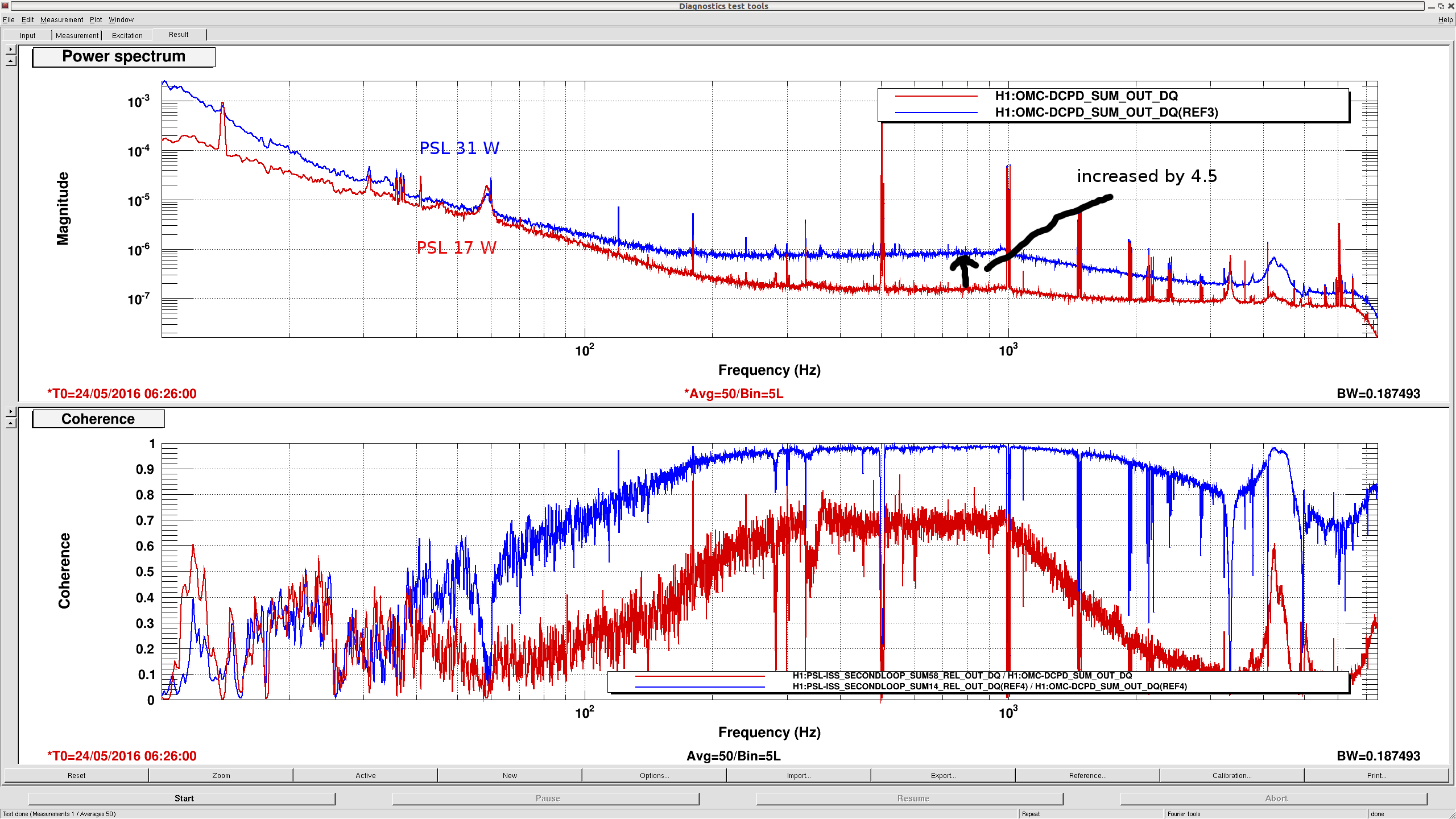It seems that the contrast defect degrades as a function of the PSL power when we power up according to the data from last night. This is not surprising.
However, this could be a cause of the recent behavior where the power recycling gain decreases as we power up. Tuning up the differential CO2 at a high PSL power can be an interesting experimental option to try out.
[An offline analysis]
I have looked at the data from last night. There were two good periods where the interferometer was locked stabily at different powers within the same lock stretch.
- 24-May-2016 6:26 UTC, locked with a 17 W PSL power, DC readout
- 24-May-2016 6:50 UTC, locked with a 31 W PSL power, DC readout
Because our OMC/DARM servo automatically maintains the same amount of the DC carrier light at the dark port (20 mA in DCPD SUM), increasing the PSL power from 17 to 31 W must have changed the DARM offset by sqrt(17/31) = 0.74. If there was no contrast defect, the amount of intensity noise at DCPD SUM should not change because it is only the local oscillator field who carries the intensity noise audio sidebands to the dark port and the absolute size of the local oscillator field is maintained to the same value by the OMC/DARM servo. In contrast, the intensity noise conveyed by the contrast defect simply scales with the PSL power and therefore one might expect an increase by a factor of 2 ish in the coupling coefficient for the case of the contrast-defect-induced intensity noise (assuming that the contrast defect does not change.)
The attached below shows a spectrum of the DCPD SUM for the two different power configurations.
As shown, the spectra above 100 Hz are (roughly speaking) almost always intensity noise limited. The variation of the spectral shape below 100 Hz might be due to different ASC settings which Sheila and Evan tried on the fly. The intensity noise increased by a factor of 4.5 or so rather than a factor of 2 at around 1 kHz as we powered up the PSL power. This likely means that the contrast defect became worse by a factor of 2 or so in its field strength power at the dark port. Although it is unclear how much this degradation of the contrast defect contributes to our recent low power recycling gain, it may be interesting to tune up the differential CO2 to see if we can get back to a high recycling gain.

